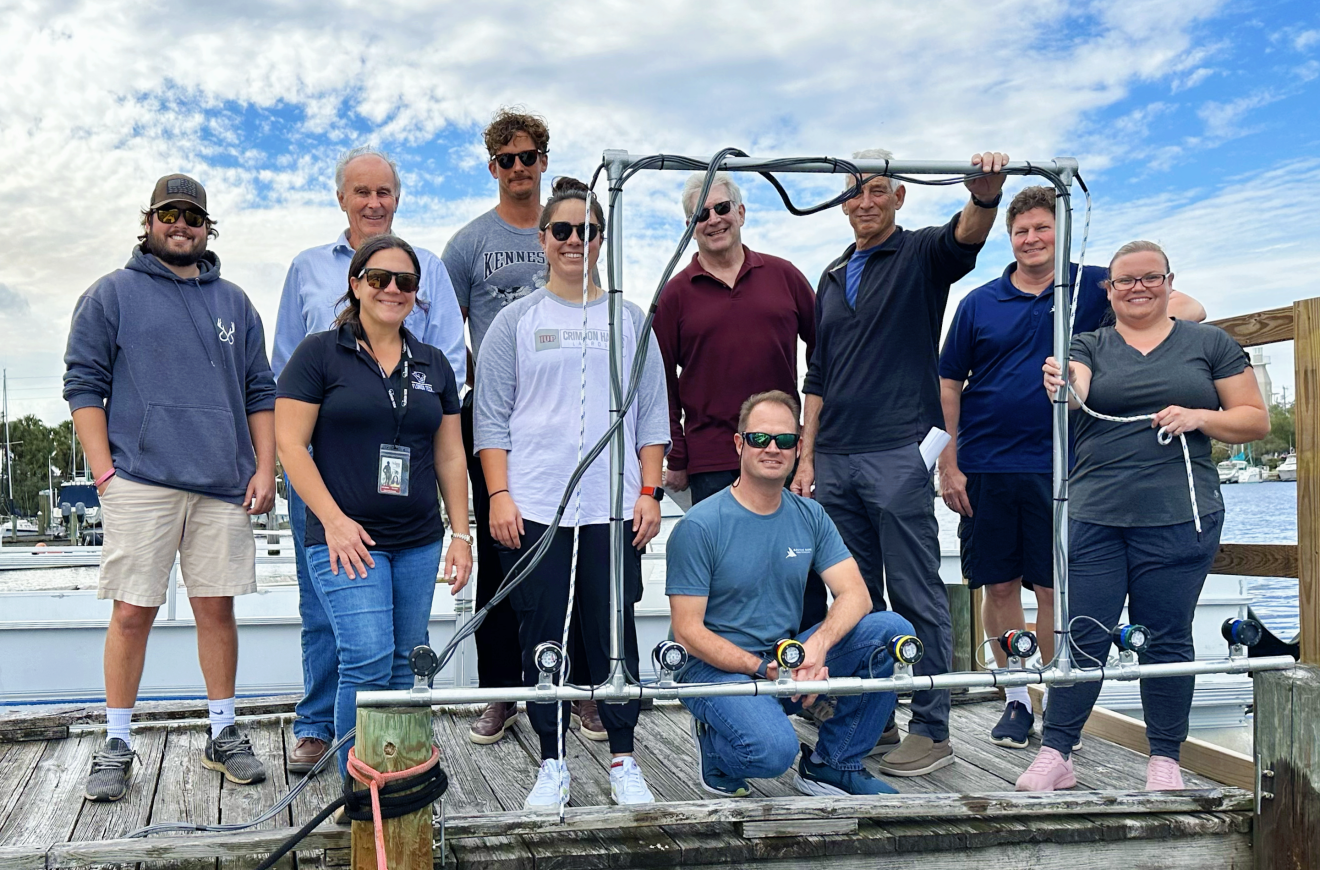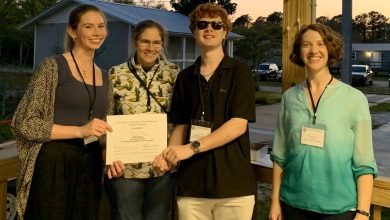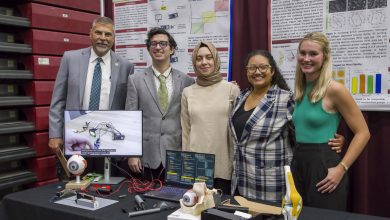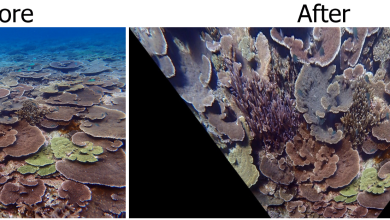Florida Tech Antifouling Research Tested in Navy-Funded Project
Kelli Hunsucker Partners with Florida Tech Alumni to Test Effectiveness of UVC Light on Biofouling
MELBOURNE, FLA. — If you’ve ever looked underwater and seen a dock piling covered with barnacles, oysters, algae or other living things, you’ve seen biofouling in action.
Though it seems like an inevitable part of sea life, these creatures can be problematic when it comes to certain marine systems. A group of researchers with Florida Tech ties are trying to find the best way to battle them.
Kelli Hunsucker, assistant professor of oceanography at Florida Tech, has spent several years researching how to safely combat biofouling through ultraviolet-C (UVC) light. Now, the Office of Naval Research (ONR) is funding a project using her findings to aid in the development of a clear-coat protection system for the marine environment. She’s working with two companies, both headed by Florida Tech alumni: Arctic Rays in Satellite Beach and Maryland-based Severn Marine Technologies (SMT).
In 2021, Hunsucker published a paper analyzing the anti-fouling effectiveness of three UVCs under multiple conditions. That research was a continuation of previous biofouling and UVC research on naval ships.
According to the research, after immersing any surface in water, it will immediately start accumulating a film, followed by bacteria and other unicellular organisms. Together this creates a slime known as microfouling. When barnacles, oysters and other creatures follow, that’s called macrofouling. Biofouling is the collection of all growth.
When biofouling happens on the hull of a ship, it can affect its ability to cut smoothly through the water, leading to greater greenhouse gas emissions and sometimes the transfer of invasive species around the world.
In the past, the buildup has been removed mechanically through remote-operated wipes or by power washing. However, those methods may also unintentionally remove potentially harmful biocide coatings.
Using UVC light is an environmentally friendly method that Hunsucker’s research has shown may even work better than the alternatives.
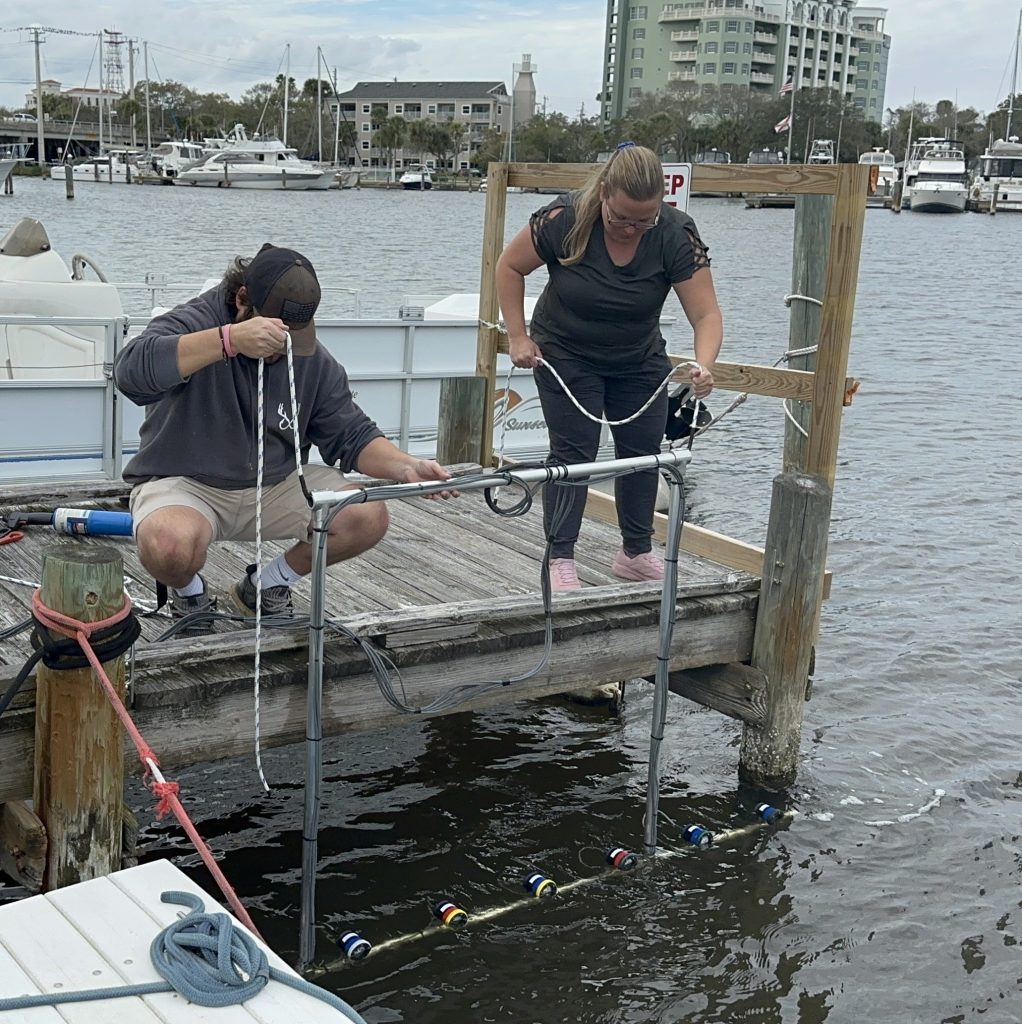
“We found that the UVC actually can enhance the performance of the ship hull coatings so that they remain even cleaner than they would on their own,” Hunsucker said.
The ONR-funded project builds on Hunsucker’s research, applying her data to a set of underwater, UVC-emitting LED housing units. Arctic Rays designed the housing units and Severn Marine Technologies designed the clear coating for the units. Their goal is to make the clear coating and UVC light work together.
“This isn’t a contrived effort,” said Hank Lobe ’95 M.S., president of Severn Marine Technologies. “This really is a solid collaboration.”
The first phase of testing focused on evaluating different types and intensities of LEDs.
“The array of lights offers a combination of two different UVC wavelengths, two types of optical distributions and power levels as well as coated and uncoated windows from Severn Marine Technologies,” said Dirk Fieberg ’01, ’03 M.S., general manager of Arctic Rays. “The AR driver technology enables each LED combination to be tested at its maximum rated power level and provides a built-in microprocessor that can be customized to the scientist’s desired operational duty cycle.”
The team deployed the housing units from Florida Tech’s Mertens Marine Center in February after months of preparation. The plan was to determine the best combination of UVC wavelength and intensity to attack biofouling.
The setup and immersion went smoothly. Working alongside a crew of Florida Tech alumni didn’t hurt.
“I really appreciated that everyone had a background in marine systems and how smoothly things came together,” Hunsucker said. “Working in the ocean environment is harsh, and there are many small things that could go wrong during a deployment. But working with a seasoned team like this, everything was thought about beforehand.”
Despite running the UVC group, Hunsucker said graduate students Abby Cermak and Cierra Braga are carrying most of the research, from checking on developments at Mertens to providing crucial reports.
The second phase is being finalized. In Florida, fouling intensifies between May and September, which could create aggressive conditions ideal for testing the coating UVC system.
“[We’re] looking forward to the results, seeing how the different UVC treatments are going to work in this higher-fouling system,” Hunsucker said. “I think we’re all excited and ready for phase two.”

